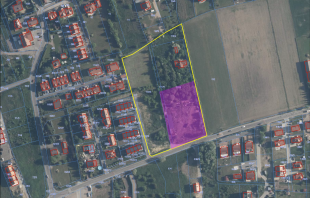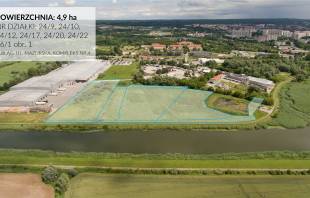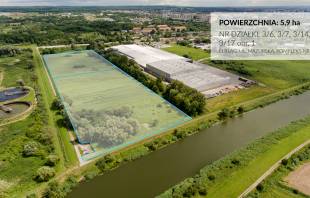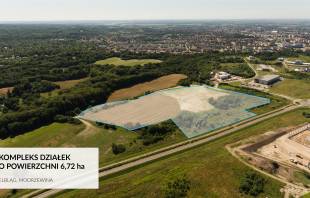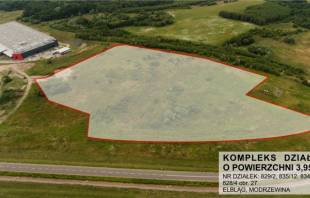A range of factors can affect the choice of a plot of land for a development project, including the rising supply of warehouse and industrial space, workforce availability and governmental amendments to legal acts such as building law, water law, zoning law or amendments to regulations on trading in arable lands.
Both legal and environmental assessment of a land property and a physical inspection of the condition of the land and deep groundwater will have an impact on a project’s commercial viability and time required for completion.
What specifically should be considered before buying a plot?
First and foremost, you should find out whether a plot is included in the Master Plan (MPZP) which is an act of local law adopted by a city or gmina council detailing permitted land use and development. These plans must be taken account of when applying for a building permit. Green area percentage, floor-area ratio, siting of a building on a plot, access to a public road, intended uses of adjacent lands, cubic volume of a building and its roof’s shape are some of the requirements that must be met by an investor.
If a land for a planned project is not included in the Master Plan, you should consult a zoning study that sets out general restrictions on land use and constitutes a basis for applying for a zoning decision (WZiZT).
In April the Polish government intends to amend the Act on Spatial Planning and Development quite significantly by limiting the validity of zoning decisions to maximum two years, introducing the requirement to provide utility infrastructure, develop the immediate vicinity, and to specify primary functions of schemes, among others. In addition, investors will be required to check the current class of land in a cadastral survey when applying for a zoning decision for a particular plot of land.
No major issues are associated with lands intended for development and arable lands of class above IV. As regards arable lands with class below IV, a decision on exclusion of such lands from agricultural production and change of status from class III to class IV would have to be obtained. Given the current regulations on trading in such lands and other upcoming amendments planned for this year, this may also have a substantial impact on a project’s timeframe.
All the above checks are carried out as part of a legal due diligence process to review thoroughly the legal status of a plot of land before acquisition. Review includes in particular the land and mortgage register to check title to the property, perpetual usufruct, existing encumbrances such as easements, mortgages, and third party claims, and the cadastral survey. An important aspect of locating a development project is to identify the type of property right: is it ownership or perpetual usufruct? A perpetual usufructuary is permitted to use a property solely as designated in the perpetual usufruct agreement. The perpetual usufructuary will, however, be at a crossroads if there is any disparity between the intended use and development of a property specified in the perpetual usufruct agreement and the zoning plan or study (for instance when a new zoning plan is adopted). It is possible to amend the perpetual usufruct agreement, but the process requires time and money.
Technical issues are another area that should be investigated in a process called technical due diligence. Geotechnical investigations are extremely useful in this as they will help identify geomechanical properties of land and avoid potential problems during the actual operation of a scheme such as subsidence of foundations. Such investigations are mainly carried out to identify the land’s bearing capacity and groundwater level. With this wealth of knowledge at hand, we can take preventive action early enough to protect a property against the risk of flooding.
An Environmental Site Assessment (ESA) must be carried out in addition to geotechnical investigations and, depending on the complexity of diagnosed problems, will comprise one, two or three phases incorporating various levels of site assessment.
During phase one potential contamination of soil and groundwater is assessed. It includes a review of historical and regulatory information (if available), informal consultations of key environmental protection regulations (subject to confidentiality) and an on-site visit.
During phase two, soil and water are analysed to detect the presence of contaminants in accordance with the relevant regulation of the Ministry of the Environment.
Phase three of the ESA aims to delineate contaminated areas and specify quantities of contaminated materials that need to be cleaned up or monitored even for several seasons. This study is normally carried out in mining areas.
These are only a small part of many issues that need to be considered when buying a plot of land. Others will include examination of access to utilities, existing infrastructure for liquidation or relocation, tree cutting, proximity of running and still water, and availability of workforce and public transport.
Choosing an optimal plot of land is not an easy process. There are many issues at stake that require time to review and, first and foremost, specialist expertise that can be provided only by commercial real estate advisors and technical experts. Understanding the full spectrum of technical risks and commercial conditions of scheme development options and proper management are key to the success of any investment project.
How tosafety select a plot for industrial and warehouse project























